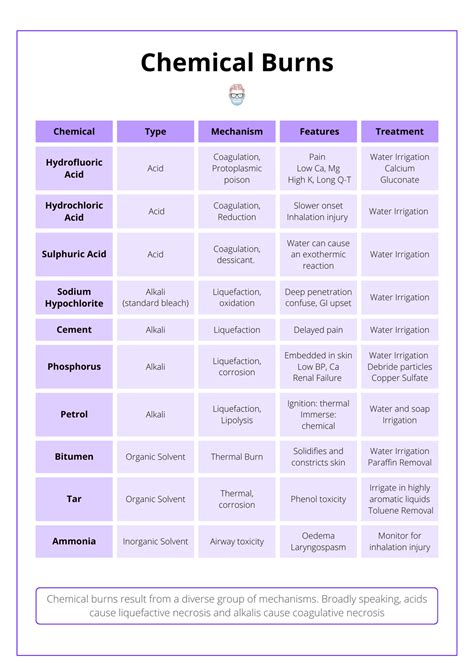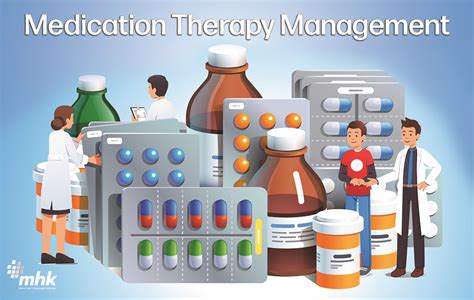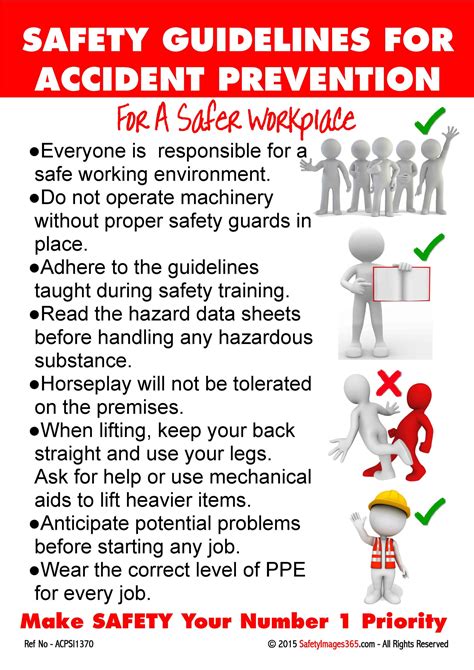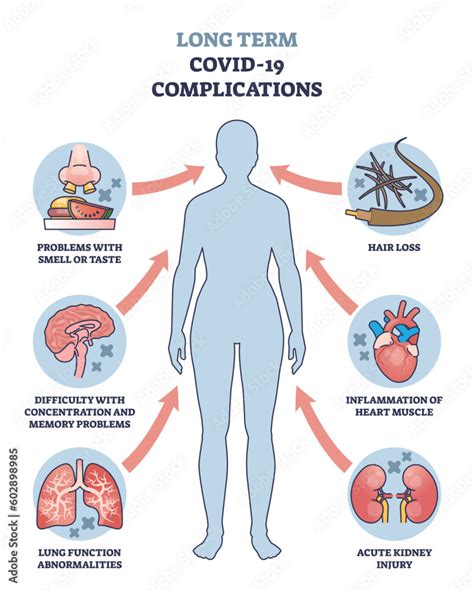Intro
Treat chemical burns effectively with our comprehensive guide, covering causes, symptoms, and remedies, including first aid, wound care, and skin repair to promote healing and prevent scarring.
Chemical burns can be devastating and require immediate attention to prevent further damage. These types of burns occur when the skin or eyes come into contact with a corrosive substance, such as acid or base, which can cause severe irritation, blistering, and even permanent scarring. The importance of proper treatment cannot be overstated, as it can significantly impact the healing process and the overall outcome. In this article, we will delve into the world of chemical burn treatment, exploring the various methods, techniques, and best practices for managing these types of injuries.
Chemical burns can occur in a variety of settings, including the workplace, at home, or in the environment. They can be caused by a range of substances, from common household cleaners to industrial chemicals. The severity of the burn will depend on the type of substance, the concentration, and the duration of exposure. It is essential to understand the risks and take preventive measures to minimize the likelihood of a chemical burn. However, in the event of an accident, it is crucial to know how to respond quickly and effectively to mitigate the damage.
The consequences of inadequate treatment can be severe, leading to prolonged recovery times, disfigurement, and even long-term health complications. Furthermore, chemical burns can also have a significant emotional and psychological impact on the individual, affecting their quality of life and overall well-being. Therefore, it is vital to seek medical attention immediately if you or someone you know has suffered a chemical burn. With the right treatment and care, it is possible to minimize the damage and promote a full recovery.
Understanding Chemical Burns

Chemical burns, also known as caustic burns, occur when the skin or eyes come into contact with a corrosive substance. These substances can be either acidic or basic and can cause significant damage to the skin and underlying tissues. The severity of the burn will depend on the type of substance, the concentration, and the duration of exposure. Chemical burns can be classified into four degrees, ranging from minor to severe. First-degree burns affect only the outer layer of the skin, while fourth-degree burns extend into the deeper tissues, potentially causing permanent damage.
Types of Chemical Burns
There are several types of chemical burns, including: * Acid burns: caused by substances with a low pH, such as sulfuric acid or hydrochloric acid * Base burns: caused by substances with a high pH, such as sodium hydroxide or calcium hydroxide * Solvent burns: caused by substances that can dissolve or break down the skin, such as acetone or gasoline * Irritant burns: caused by substances that can cause irritation or inflammation, such as soap or detergentTreatment and Management

The treatment and management of chemical burns require a comprehensive approach, involving immediate first aid, medical attention, and ongoing care. The primary goal is to neutralize the corrosive substance, prevent further damage, and promote healing. In the event of a chemical burn, it is essential to act quickly and follow the proper procedures to minimize the damage.
First Aid
The first step in treating a chemical burn is to remove the affected individual from the source of the burn. This may involve evacuating the area or removing contaminated clothing. The next step is to flush the affected area with cool or lukewarm water for at least 20 minutes to help neutralize the corrosive substance. It is essential to avoid using hot water, as this can activate the substance and cause further damage.Medical Attention
After providing first aid, it is crucial to seek medical attention as soon as possible. A healthcare professional will assess the severity of the burn and provide further treatment, which may include: * Debridement: the removal of dead tissue to promote healing * Dressings: applying topical creams or dressings to protect the wound and promote healing * Medications: prescribing medications to manage pain, prevent infection, and promote healing * Surgery: in severe cases, surgery may be necessary to repair damaged tissues or graft new skinPrevention and Safety

Prevention is key when it comes to chemical burns. By taking the proper precautions and safety measures, it is possible to minimize the risk of a chemical burn. This includes:
- Wearing protective clothing, such as gloves, goggles, and masks, when handling corrosive substances
- Reading and following the instructions on the label carefully
- Ensuring good ventilation when working with corrosive substances
- Keeping corrosive substances out of reach of children and pets
- Disposing of corrosive substances properly
Safety Equipment
Having the right safety equipment on hand can make all the difference in the event of a chemical burn. This includes: * Eye wash stations * Shower facilities * First aid kits * Protective clothing, such as gloves and gogglesComplications and Long-Term Effects

Chemical burns can have significant complications and long-term effects, including:
- Infection: bacterial or fungal infections can occur, particularly if the wound is not properly cleaned and dressed
- Scarring: chemical burns can cause significant scarring, which can be permanent
- Disfigurement: chemical burns can cause disfigurement, particularly if the face or hands are affected
- Emotional and psychological trauma: chemical burns can have a significant emotional and psychological impact, affecting the individual's quality of life and overall well-being
Rehabilitation and Recovery
The rehabilitation and recovery process for chemical burns can be lengthy and challenging. It requires a comprehensive approach, involving medical treatment, physical therapy, and emotional support. The goal is to promote healing, prevent complications, and restore function and mobility.Conclusion and Final Thoughts

In conclusion, chemical burns require immediate attention and proper treatment to prevent further damage and promote healing. By understanding the causes, symptoms, and treatment options, individuals can take the necessary steps to prevent chemical burns and minimize their impact. It is essential to prioritize safety, take precautions, and seek medical attention if a chemical burn occurs. With the right treatment and care, it is possible to recover from a chemical burn and regain a full range of motion and function.
We invite you to share your thoughts and experiences with chemical burns in the comments section below. Your input can help others understand the importance of proper treatment and prevention. Additionally, if you have any questions or concerns, please do not hesitate to reach out. We are here to provide you with the information and support you need to navigate the complex world of chemical burn treatment.
What are the most common causes of chemical burns?
+Chemical burns can be caused by a range of substances, including acid, base, solvent, and irritant substances. Common examples include sulfuric acid, sodium hydroxide, acetone, and soap.
How can I prevent chemical burns?
+To prevent chemical burns, it is essential to take precautions when handling corrosive substances. This includes wearing protective clothing, reading and following the instructions on the label carefully, ensuring good ventilation, and keeping corrosive substances out of reach of children and pets.
What is the best way to treat a chemical burn?
+The best way to treat a chemical burn is to act quickly and follow the proper procedures. This includes removing the affected individual from the source of the burn, flushing the affected area with cool or lukewarm water, and seeking medical attention as soon as possible.
